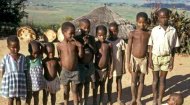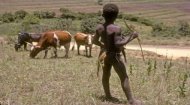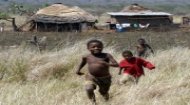|
Eswatini Profile |
Eswatini Profile |
Eswatini Profile | Eswatini Profile |
About street children in Africa who have often left home to escape poverty and violence in facts & figures.
More >
|
|

 With a life expectancy of 61.67 years (2025), Eswatini has a very high number of orphans and vulnerable children, largely due to the impact of HIV/AIDS. Estimates suggest that nearly half the population of Eswatini are vulnerable children, with over 200,000 of them being orphans. Specifically, 58% of children are classified as orphans or vulnerable children, according to the World Food Programme. One in four children have lost one or both parents, and at least 38% of rural households care for at least one orphan. These children are the ones most likely to drop out of school, be trafficked and suffer even more than others from poverty and malnutrition, with about 25.5% of children under five being stunted. Education for children in Eswatini however fares somewhat better, although it is not compulsory, nor free except for orphans and certain other disadvantaged children. Enrolment is very high and over 90.75% of the population is literate. Unfortunately child trafficking is widespread with children trafficked internally and to other countries. For girls this mainly includes domestic servitude and sexual exploitation whilst for boys the trafficking is normally for forced labour and begging or selling in markets. Despite its small size, Eswatini has eighteen airports, over 2000 miles of highways but just 187 miles of railway. With both English and siSwati as its official languages, its population is 97% African and 3% European with 40% being Zionist, 20% Roman Catholic and just 10% Muslim with other religions such as Methodists, Anglicans, Mormons and Jews comprising the remaining 30%. Find out more about Eswatini in the profile articles above exploring the kingdom in more detail with pictures, facts and videos. |
















